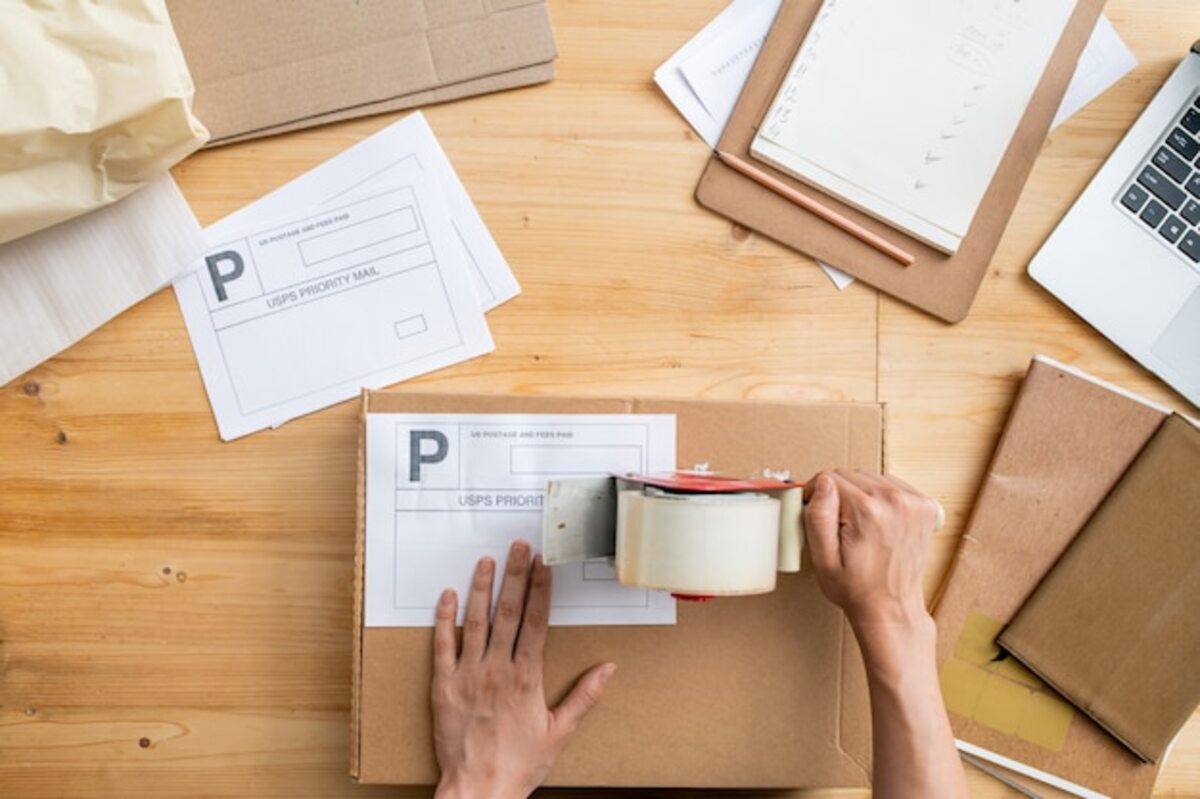Design an efficient labeling system for your move.

Designing an efficient labeling system for your move is essential to ensure that each item reaches its destination without complications. Good labeling will not only save you time when unpacking but will also reduce the stress associated with the moving process. In this article, we will explore how to create a labeling system that will allow you to organize your belongings effectively and make your move smoother. Get ready to transform this experience into something much more manageable and less overwhelming.
The importance of labeling in an organized move
Proper labeling is a crucial component in the moving process that is often overlooked. When you pack your belongings, it's easy to lose track of what you've stored in each box. By implementing a clear and consistent labeling system, you will not only make the unpacking task easier but also be able to quickly identify the items you need during the transition process. For example, labeling boxes with keywords like "kitchen," "bedroom," or "urgent" will allow you to prioritize what to open first and prevent the frustration of searching through multiple boxes to find essential items.
Additionally, labeling plays a crucial role in effective communication with any helper or moving company you may hire. A well-designed system allows those assisting you to quickly understand where each box should be placed in your new home. This not only optimizes the time of the moving process but also reduces the risk of damage to your belongings by avoiding confusion about their final location. In summary, taking the time to establish an effective labeling system can make a significant difference in the organization and efficiency of your move.
2. Necessary materials for an effective labeling system
To implement an effective labeling system, it is essential to have the right materials. A good start is to have adhesive labels or a permanent marker on hand. Labels allow for clear and quick identification of each box, while the marker can be useful for creating personalized notes on items or on boxes that do not have a label. Opting for labels of different colors can also be advantageous; for example, assigning a specific color for each room (like blue for the kitchen and green for the bedroom) further facilitates organization during unpacking. In addition to labels and markers, it will be helpful to have strong adhesive tape and suitable boxes for transport. The tape ensures that the boxes remain closed during the move, preventing them from opening or getting damaged. When choosing boxes, consider using various sizes: large ones for lightweight items and smaller ones for heavy objects. This variety not only optimizes space in the moving vehicle but also makes the loads more manageable when carrying them to the new home. With these materials ready, you will be on your way to creating a labeling system that will significantly simplify your moving process.
3. Types of labels: which one to choose according to your needs?
When choosing labels for your move, it is crucial to consider the type of material and design that best suits your needs. There are various options, from adhesive labels that can be directly attached to boxes to hang tags that offer greater versatility. Adhesive labels are ideal for those seeking speed and simplicity, as they only require writing the necessary information and sticking them in place. On the other hand, hang tags provide the advantage of being reusable and can include more detailed information about the contents of the box or its specific destination within the new home.
In addition to the format, it's also important to select the right size and color for the labels. Large labels are perfect for big or heavy boxes, as they are more visible from a distance and facilitate quick identification when unpacking. On the other hand, small labels can be useful for smaller items or for a more organized system where each box contains various types of objects. Colors also play an essential role; using a color code can help you quickly identify the rooms to which the items belong, further simplifying the moving process when you arrive at your new home. Consider all these options to customize your labeling system according to your specific needs and make your move much more efficient.
4. How to sort your belongings before labeling
Before you start labeling, it is essential to sort your belongings to facilitate the organization process. Sorting will allow you to group similar items and eliminate the unnecessary. Start by dividing your belongings into categories such as clothing, kitchen utensils, decorative items, and important documents. This will not only help you have a clearer view of what you own but also ensure that each category is managed properly during the move. Additionally, consider making a list of each category as you sort; this will be useful for later labeling. Once you have sorted your belongings, it's time to decide how you want to label them. You can opt for a simple system based on colors or numbers that represent each category, or use more specific labels that include details about the contents of each box. You can also include additional instructions if there are fragile items or elements that need to be unpacked first. Remember that a good labeling system not only facilitates the move but also provides clarity when establishing which boxes are a priority upon arriving at your new home. With proper sorting and effective labeling, your move will be much more organized and less stressful.
5. Creative techniques for designing attractive labels
Designing attractive labels can be a fundamental part of your labeling system, as they not only serve to identify boxes and items but can also add a personal touch to your move. One creative technique is to use color coding for different areas of your new home. For example, you might choose blue for the kitchen, green for the living room, and red for the bedrooms. This will not only facilitate quick identification upon arriving at your new space but will also make each box stand out visually, making the process less monotonous and more dynamic.
Another effective strategy is to incorporate illustrations or icons on your labels. Instead of simply writing "books" or "clothes," consider drawing small graphics that represent the contents of the box. This technique not only makes the labels more visually interesting but also provides an immediate visual means to remember what's inside without having to open each box. Additionally, personalizing your labels with inspiring quotes or funny messages can make this process much more enjoyable and less stressful, transforming a tedious task into a fun and interactive activity.
6. The use of colors in labeling: meaning and benefits
The use of colors in labeling is a powerful visual strategy that can greatly simplify your moving process. Each color can represent a specific category, such as rooms or types of items, allowing you to quickly identify the location or contents of each box. For example, using blue labels for the kitchen and green for the living room not only makes it easier to sort your belongings but also adds an aesthetic element to your organization system. Additionally, colors can help others involved in the move, such as friends or transportation professionals, to quickly understand where each box should go when they arrive at your new home.
The benefits of color coding go beyond simple identification; they also promote a less chaotic environment during the moving process. By clearly visualizing which boxes belong to which area, you can avoid confusion and reduce the risk of losing important items. This technique saves you time both during loading and unloading as well as during unpacking. Ultimately, a color-based system not only improves efficiency and organization but also contributes to a less stressful experience by making everything feel more manageable and controlled.
7. Tips for keeping an inventory during the move
Maintaining an inventory during the move is a crucial step that complements your labeling system. To start, create a list of all the items you are packing and associate each one with its respective labels. This list can be digital or on paper, but the important thing is that it is accessible and easy to update as you pack. You can organize your inventory by rooms or categories, which will allow you to have a clear view of what you have packed and what is left to pack. This way, you will avoid unpleasant surprises when you arrive at your new home.
Also, consider taking photographs of the most valuable or fragile items before packing them. This will not only help you remember how they were organized but also document their condition in case of damage during transport. When unpacking, you will be able to quickly verify if everything arrived in good condition and if anything is missing from the inventory. Implementing this practice along with a clear labeling system will not only simplify the move but also provide you with greater peace of mind knowing exactly where each item is and in what condition it arrived at its new home.
8. Strategies for labeling in different types of housing
When addressing labeling in different types of housing, it is essential to consider the specific characteristics of each space. For example, in a small apartment, where space is limited and organization is key, you can choose labels that indicate not only the contents of the boxes but also their final location in the new home. Use colors or symbols to differentiate areas like kitchen, bedroom, and bathroom. This strategy will allow you to quickly identify where each box should go when unpacking, thereby optimizing both time and effort during the move.
In contrast, if you move to a larger house with multiple rooms and levels, your labeling system can be a bit more elaborate. Consider creating a numerical code that assigns a specific number to each room and uses this same number on all the corresponding boxes. Additionally, you can incorporate labels that include a brief list of the contents inside each box to further facilitate the unpacking process. By having a systematic approach tailored to the dimensions of your new home, you will be able to better manage the logistics of your move and ensure that everything arrives at its correct place without additional complications.
9. How to involve the whole family in the labeling process.
Involving the whole family in the labeling process not only makes the task more efficient but also turns a potentially tedious activity into a bonding moment. Start by assigning specific roles to each family member: children can take care of labeling their own boxes or help sort toys, while adults can focus on larger and heavier items. By allowing everyone to participate, a sense of responsibility and belonging towards their belongings is fostered, which can ease the emotional process of leaving a home.
You can also turn labeling into a fun activity through games or challenges. For example, set a timer and see who can label the most boxes correctly in a given time. This will not only keep the energy high during the process, but it will also make everyone feel part of the team as they work together toward a common goal. At the end of the day, they will not only have managed to organize their move efficiently, but they will also have created valuable memories by collaborating as a family in this new stage of their lives.



